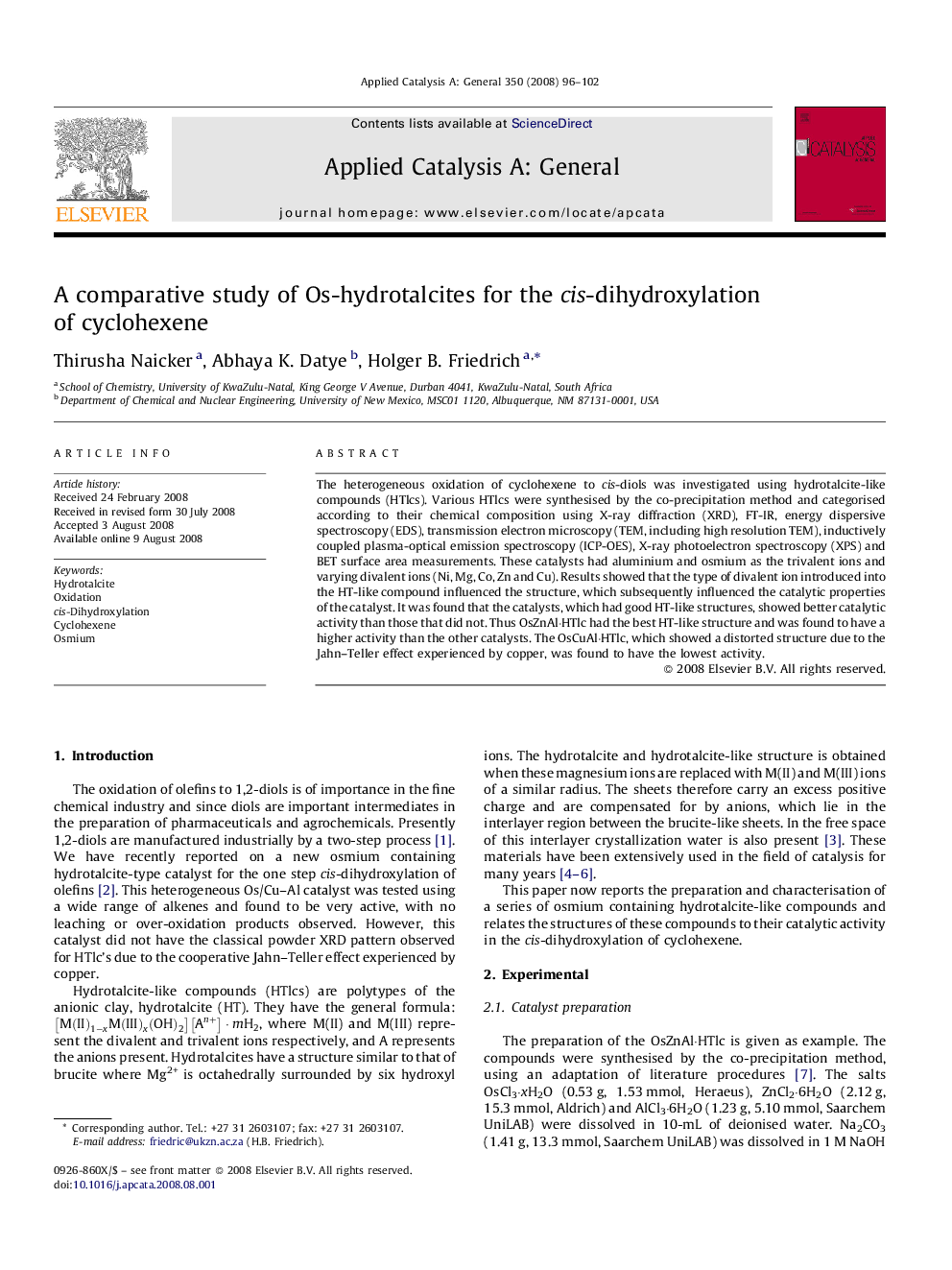| Article ID | Journal | Published Year | Pages | File Type |
|---|---|---|---|---|
| 43388 | Applied Catalysis A: General | 2008 | 7 Pages |
The heterogeneous oxidation of cyclohexene to cis-diols was investigated using hydrotalcite-like compounds (HTlcs). Various HTlcs were synthesised by the co-precipitation method and categorised according to their chemical composition using X-ray diffraction (XRD), FT-IR, energy dispersive spectroscopy (EDS), transmission electron microscopy (TEM, including high resolution TEM), inductively coupled plasma-optical emission spectroscopy (ICP-OES), X-ray photoelectron spectroscopy (XPS) and BET surface area measurements. These catalysts had aluminium and osmium as the trivalent ions and varying divalent ions (Ni, Mg, Co, Zn and Cu). Results showed that the type of divalent ion introduced into the HT-like compound influenced the structure, which subsequently influenced the catalytic properties of the catalyst. It was found that the catalysts, which had good HT-like structures, showed better catalytic activity than those that did not. Thus OsZnAl·HTlc had the best HT-like structure and was found to have a higher activity than the other catalysts. The OsCuAl·HTlc, which showed a distorted structure due to the Jahn–Teller effect experienced by copper, was found to have the lowest activity.
Graphical abstractThe heterogeneous oxidation of cyclohexene to cis-diols was investigated using hydrotalcite-like compounds (HTlcs) containing aluminium and osmium and varying divalent ions (Ni, Mg, Co, Zn and Cu). The type of divalent ion influenced the structure, which subsequently influenced the catalytic properties of the catalyst. It was found that the catalysts, which had good HT-like structures, showed better catalytic activity than those that did not.Figure optionsDownload full-size imageDownload as PowerPoint slide
